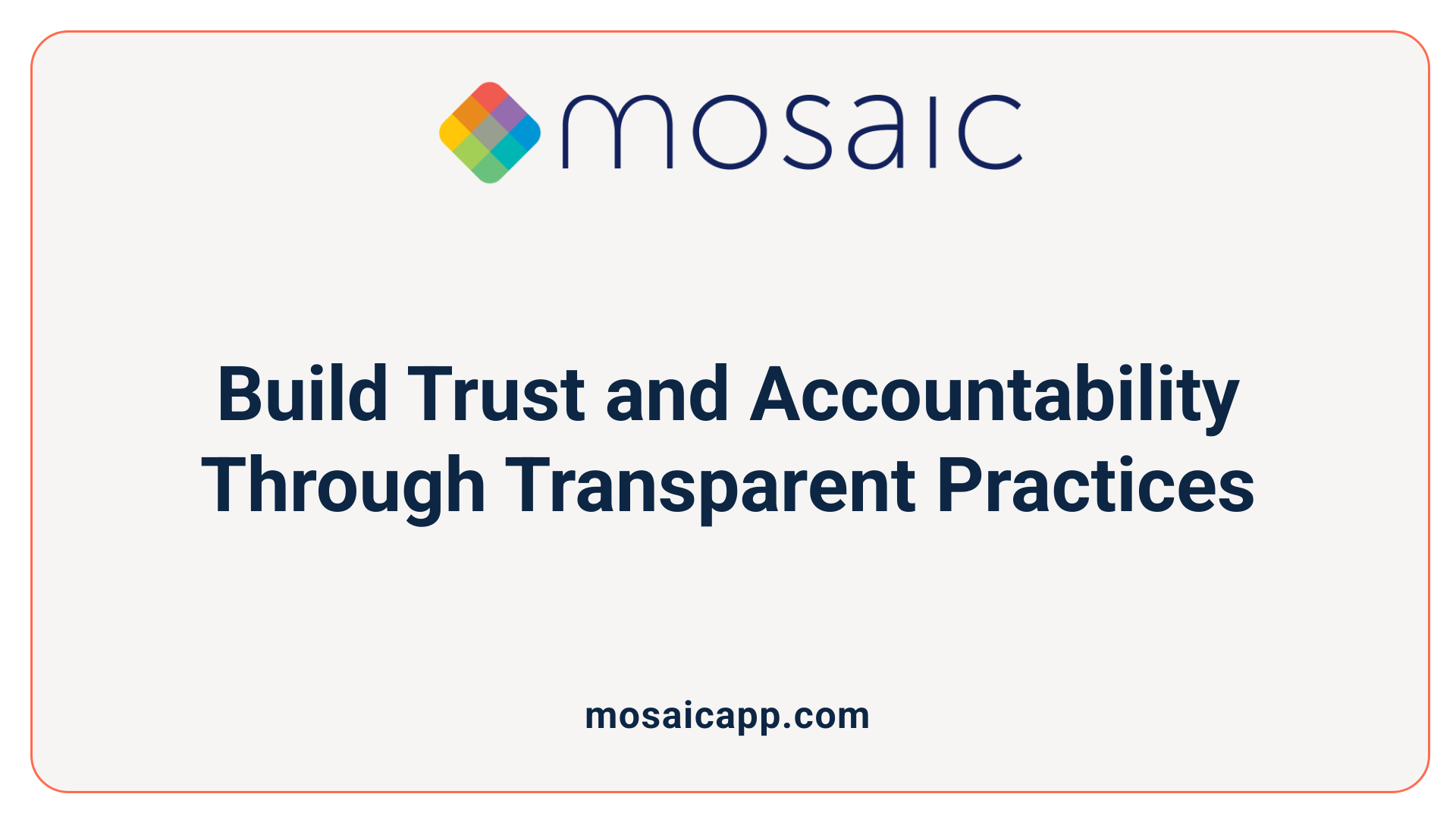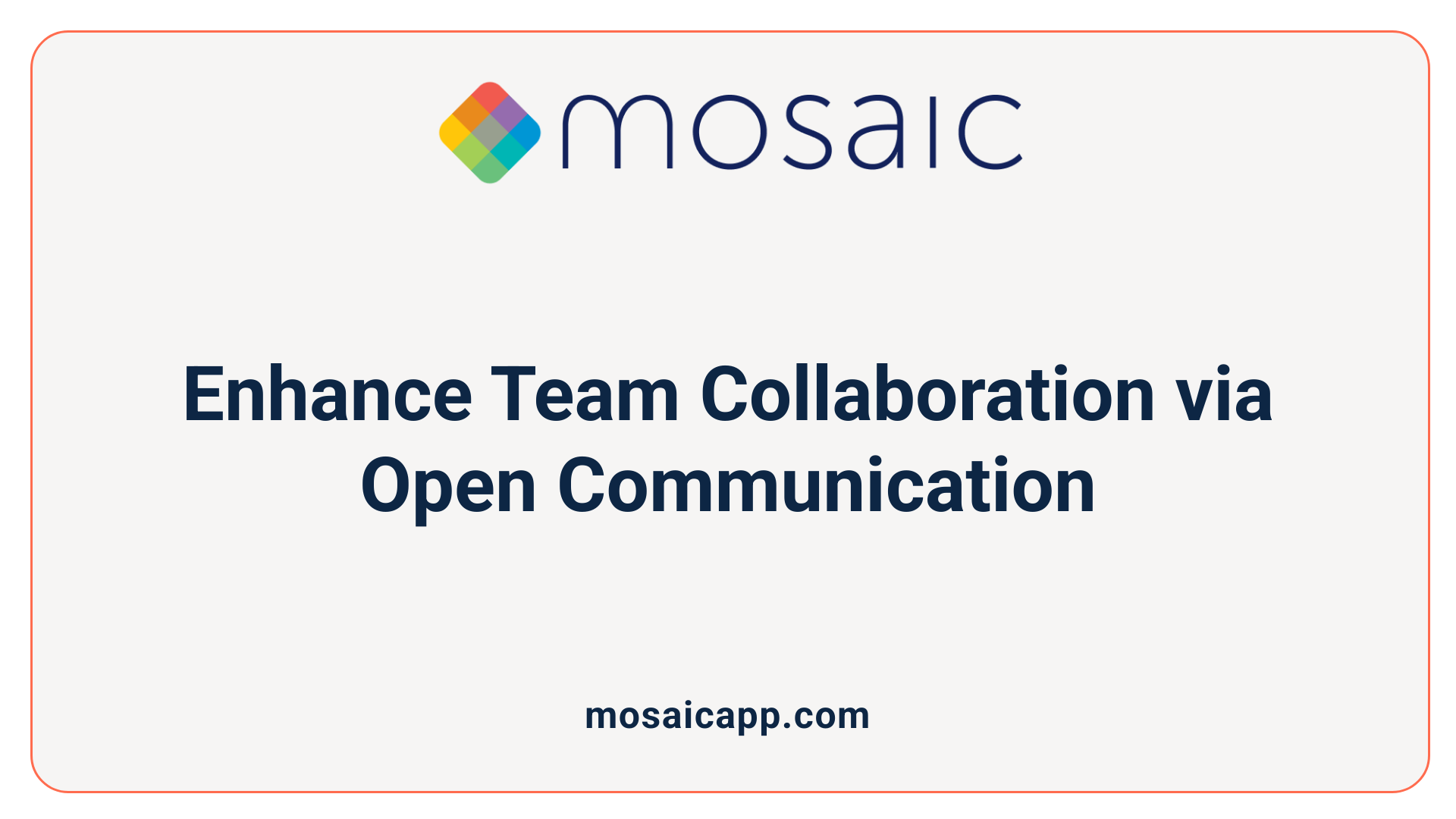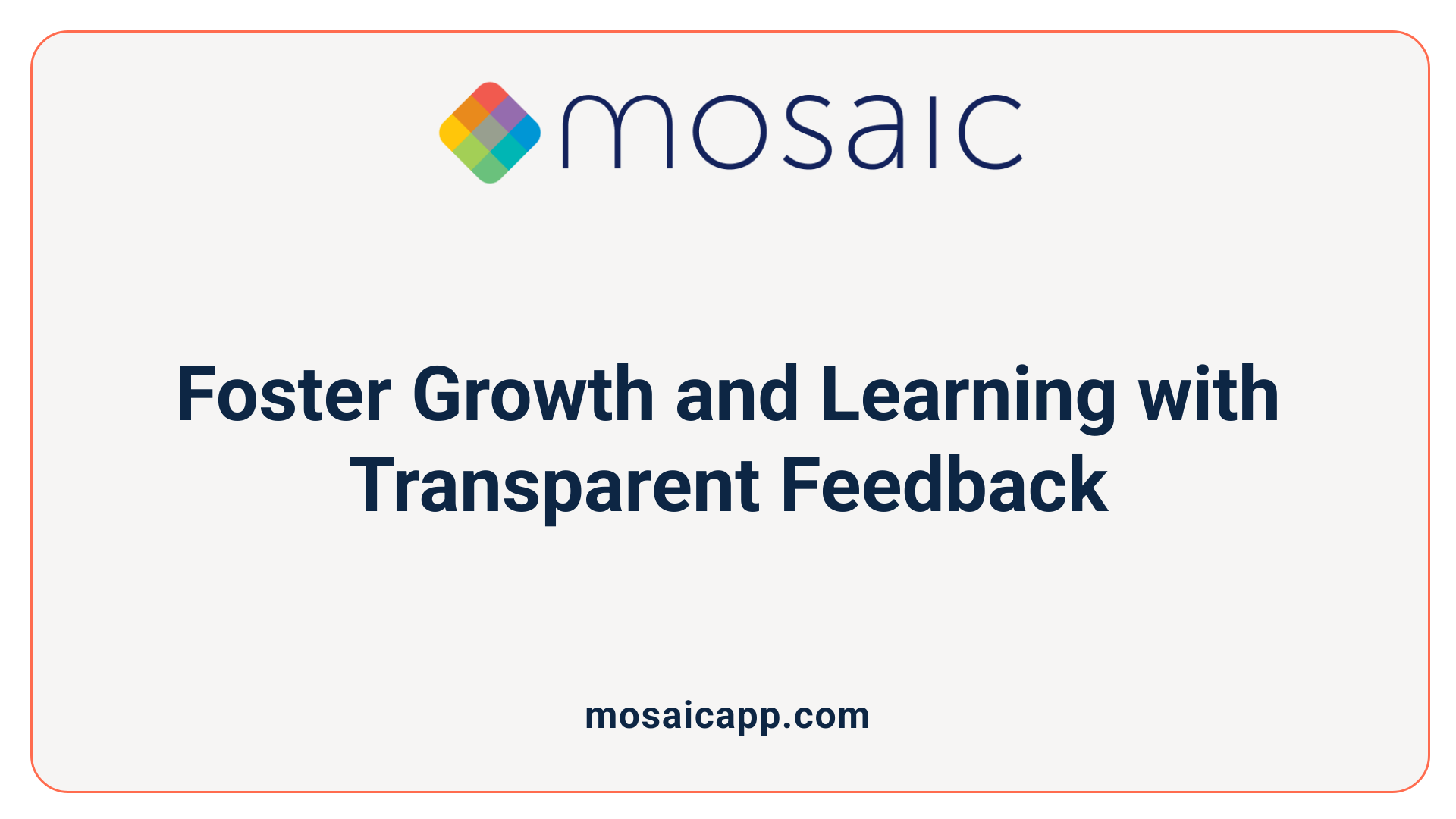The Foundation of Effective Project Teams
In today's complex project environments, transparency in resource planning is more than a best practice—it's a necessity for building stronger, more cohesive teams. As organizations strive for efficiency, accountability, and collaboration, making project information accessible and clear fosters mutual trust, enhances performance, and cultivates a culture of openness. This article explores how transparency in resource management acts as a cornerstone for team strength and project success.
Transparency: The Cornerstone of Trust and Accountability

Why is transparency important in project management?
Transparency is essential because it provides clear visibility into every task and communication aspect of a project. When team members have access to up-to-date information, including task status and project goals, they can perform their responsibilities more effectively. Transparency minimizes misunderstandings, reduces errors caused by information gaps, and fosters an environment where decisions are based on real-time, accurate data.
How does transparency build trust within teams?
Transparency builds trust by making information openly accessible, empowering employees to work autonomously yet collaboratively. When everyone understands project goals, challenges, and progress, confidence in leadership and teammates grows. Trust is strengthened through open communication channels and sharing of both successes and failures, which encourages accountability and collective ownership.
What is the role of transparency in accountability and motivation?
Clear and documented roles and responsibilities, combined with visible progress and challenges, promote accountability. Team members know what is expected of them and how their work impacts overall project outcomes. This clarity motivates individuals by aligning their efforts with team and organizational goals. It also helps in recognizing contributions, fostering skills development, and boosting productivity.
How does transparency clarify roles and expectations?
Transparency ensures that roles, deliverables, and milestones are clearly defined and accessible. By outlining these elements in centralized, digital systems, team members can continually refer to their responsibilities and deadlines. This clarity prevents overlaps and confusion, enabling effective collaboration and timely progress.
How does transparency impact team dynamics and accountability?
Transparency enhances performance and accountability by clarifying roles and expectations, motivating team members, and helping them understand how their actions impact others. It fosters trust among team members and stakeholders, which increases motivation and collaboration. Open sharing of information encourages early problem detection and supports collaborative problem-solving, keeping projects on track and teams engaged.
Real-Time Data and Centralized Systems: Enabling Clear Visibility

What role do real-time data and centralized systems play in promoting transparency?
Real-time project tracking is critical in maintaining transparency by providing up-to-date information on task progress, resource usage, and scheduling. This constant stream of accurate data helps avoid delays and resource conflicts, ensuring that everyone on the team stays informed about the current status of the project.
Centralized digital documentation complements this by acting as a single repository where all project-related documents, plans, and communications are stored. Quick access to these resources reduces misunderstandings and supports informed decision-making, as every team member can retrieve the same official information when needed.
Tools designed to support transparency, such as project management software and resource planning platforms, often integrate functionalities for real-time data updates and centralized information storage. These tools not only enable efficient communication but also provide customizable controls that safeguard sensitive data while maximizing information sharing.
The availability of up-to-date and accurate information is essential for effective decision-making. When teams have visibility into real-time project metrics and a centralized system for documentation, they can respond swiftly to emerging challenges and make adjustments that keep the project on track. This environment fosters trust, accountability, and collaboration, all of which are vital for successful project outcomes.
Fostering Open Communication and Collaborative Problem-Solving

How does open communication contribute to stronger team collaboration?
Open communication is essential for building strong team collaboration. When project communication details are shared openly—whether through meetings, emails, or project management tools—it creates transparency that keeps everyone informed. This openness allows team members to understand each other’s roles, responsibilities, and current progress, which reduces misunderstandings.
Why are feedback channels important?
Maintaining open and ongoing feedback channels is critical for project success. These channels allow team members to voice concerns, share ideas, and provide updates promptly. Continuous feedback supports transparency by highlighting inefficiencies early and enabling teams to adjust plans quickly. This also builds trust and encourages a culture of continuous improvement.
How does fostering a culture of collaborative problem-solving benefit a project?
Sharing problems openly encourages collaborative problem-solving. When issues are discussed transparently within the team, members can collectively brainstorm solutions, combining their diverse expertise. This not only results in better, more innovative fixes but also strengthens team cohesion and commitment to project goals.
What is the role of transparency in handling conflicts and changes?
Transparency in addressing conflicts and changes helps maintain trust within the team. By openly explaining the reasons behind changes and the challenges faced, teams gain a better understanding and are more likely to cooperate. Early dialogue about conflicts prevents misunderstandings and minimizes project derailment by facilitating timely resolutions.
Open communication and a culture rooted in transparency empower teams to collaborate effectively, solve problems creatively, and adapt to changes smoothly—ultimately improving project outcomes and team engagement.
Engaging Team Members Through Participation and Clear Resource Planning

How does transparency in resource planning increase team engagement and participation?
Transparency in resource planning plays a significant role in boosting team engagement. Research shows that more than 70% of employees report feeling more engaged at work when there is clear and open communication. Providing team members with access to budgetary information—especially time allocation details—allows them to plan their work effectively without exposing sensitive financial data.
Sharing organizational goals and strategies openly aligns everyone’s efforts and reduces misaligned expectations. When team members understand the bigger picture and how their roles contribute to company objectives, they become more motivated and accountable.
Involving team members in decision-making processes fosters a sense of ownership and inclusion. Open-door policies and frequent discussions encourage participation, allowing individuals to contribute their expertise and propose innovative solutions. This collaborative atmosphere enhances problem-solving and drives project success.
Clear resource planning combined with transparent communication not only helps teams stay on track but also encourages realistic goal-setting. When expectations are transparent, teams are less likely to cut corners and more likely to deliver quality results. Together, these practices promote a committed, informed, and engaged workforce.
Leveraging Technology to Maintain Transparency Without Compromise

How can technology support transparency in resource planning while protecting sensitive data?
Modern technology plays a crucial role in balancing transparency with data protection in project resource management. Tools such as Bridgit Bench are specially designed to enhance transparency in resource planning. They offer customizable permission controls, enabling project managers to share relevant information broadly while restricting access to sensitive financial details or proprietary data.
This flexibility allows teams to stay informed about resource allocation, task assignments, and project timelines without exposing confidential information that could jeopardize the project's integrity.
Moreover, integrating resource management tools with other construction software strengthens transparency further. Such integration harmonizes workforce planning data, ensuring that everyone views consistent and accurate information.
This seamless sharing minimizes human errors, promotes better decision-making, and improves collaboration across departments. In addition, real-time updates offered by digital tools keep all team members aligned, reducing the risk of delays and miscommunication.
By employing technology that supports customizable access and integration capabilities, organizations can foster an open and transparent work environment that also respects privacy and security boundaries. This approach empowers employees with the information they need to be productive while safeguarding the project’s critical data assets.
Transparency’s Role in Continuous Improvement and Team Development

How does transparency help recognize individual contributions and promote skills development?
Transparency creates an environment where individual efforts are visible and acknowledged. Recognizing each team member’s contributions boosts morale and motivates ongoing skill enhancement. When achievements and challenges are openly shared, individuals become more aware of their areas for growth, fostering a culture of learning and continuous development.
Why is feedback important in supporting continuous improvement?
Encouraging open and regular feedback throughout the project lifecycle builds trust among team members. Transparent feedback channels help identify inefficiencies and areas needing improvement quickly. This ongoing communication supports teams in refining processes, enhancing performance, and adapting to new challenges.
How are different project methodologies adapted to promote transparency?
Project management approaches such as Agile, Kanban, and Waterfall each promote transparency in unique ways. Agile encourages flexible, frequent communication and responsiveness to change, fostering transparency through iterative feedback. Kanban visualizes workflow, making task progress clear to all team members at any time. Waterfall emphasizes upfront planning and documentation, ensuring that goals and expectations are transparent from the start.
In what ways does transparency contribute to continuous team improvement and development?
Overall, transparency helps recognize individual contributions and promotes skills development, which enhances overall team productivity. It fosters trust through continuous feedback, supporting iterative learning and better decision-making. Adapting project management methodologies to maintain transparency encourages flexibility and clear communication, creating a foundation for sustained team growth and successful project outcomes.
| Aspect | Transparency Benefit | Practical Impact |
|---|---|---|
| Individual contributions | Visible and acknowledged efforts | Boosts morale, encourages learning |
| Skills development | Awareness of strengths and weaknesses | Drives targeted improvement |
| Feedback | Builds trust and identifies inefficiencies | Supports process refinement |
| Agile methodology | Promotes frequent communication and adaptation | Enhances responsiveness to change |
| Kanban methodology | Visualizes workflow | Clarifies task status and progress |
| Waterfall methodology | Emphasizes upfront planning and documentation | Ensures clear expectations and goal alignment |
Building Stronger Teams Through Transparent Resource Planning
Transparent resource planning is a vital practice that empowers teams by fostering trust, improving communication, and enabling informed decision-making. By embracing openness in sharing real-time data, budget considerations, project changes, and challenges, organizations cultivate a culture of accountability and collaboration. Leveraging technology thoughtfully enhances this transparency while safeguarding sensitive information. Ultimately, transparency not only elevates individual and team performance but also drives sustained project success and organizational growth. Building stronger teams starts with a commitment to transparent resource planning—a foundation on which successful projects are built.


